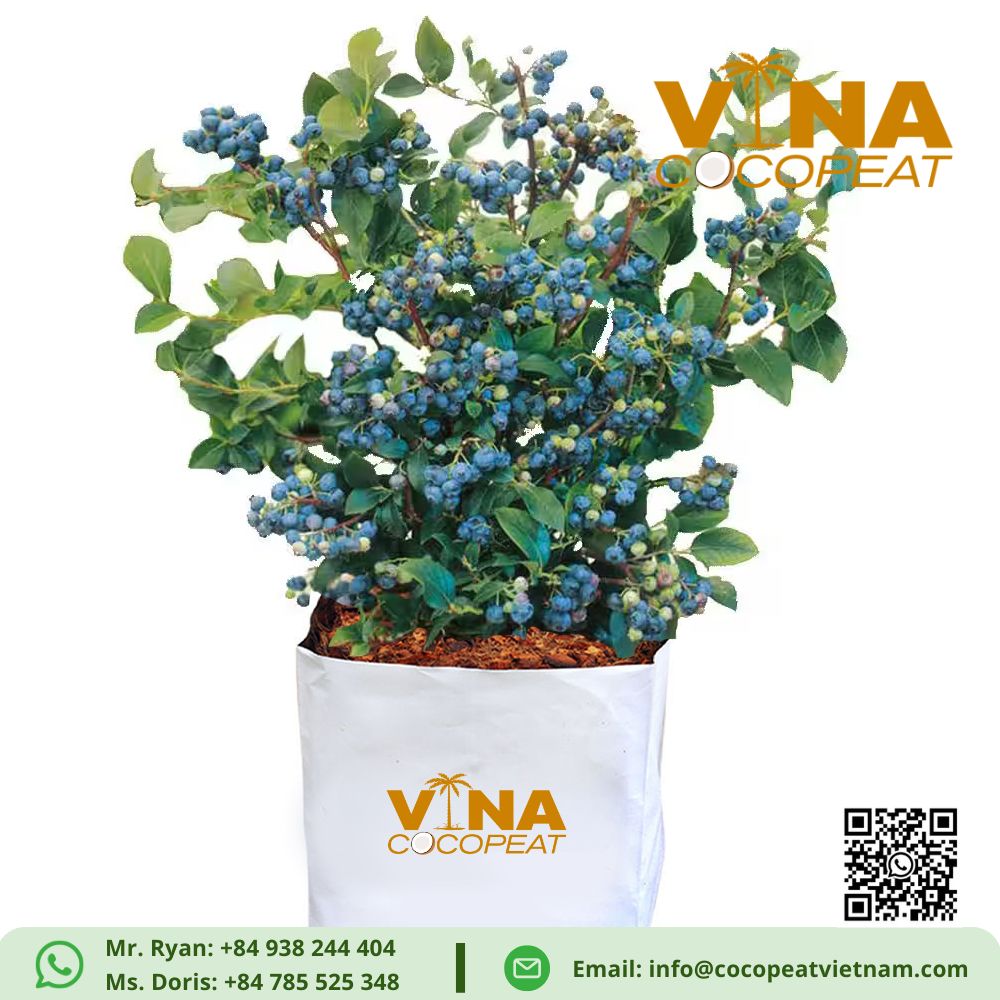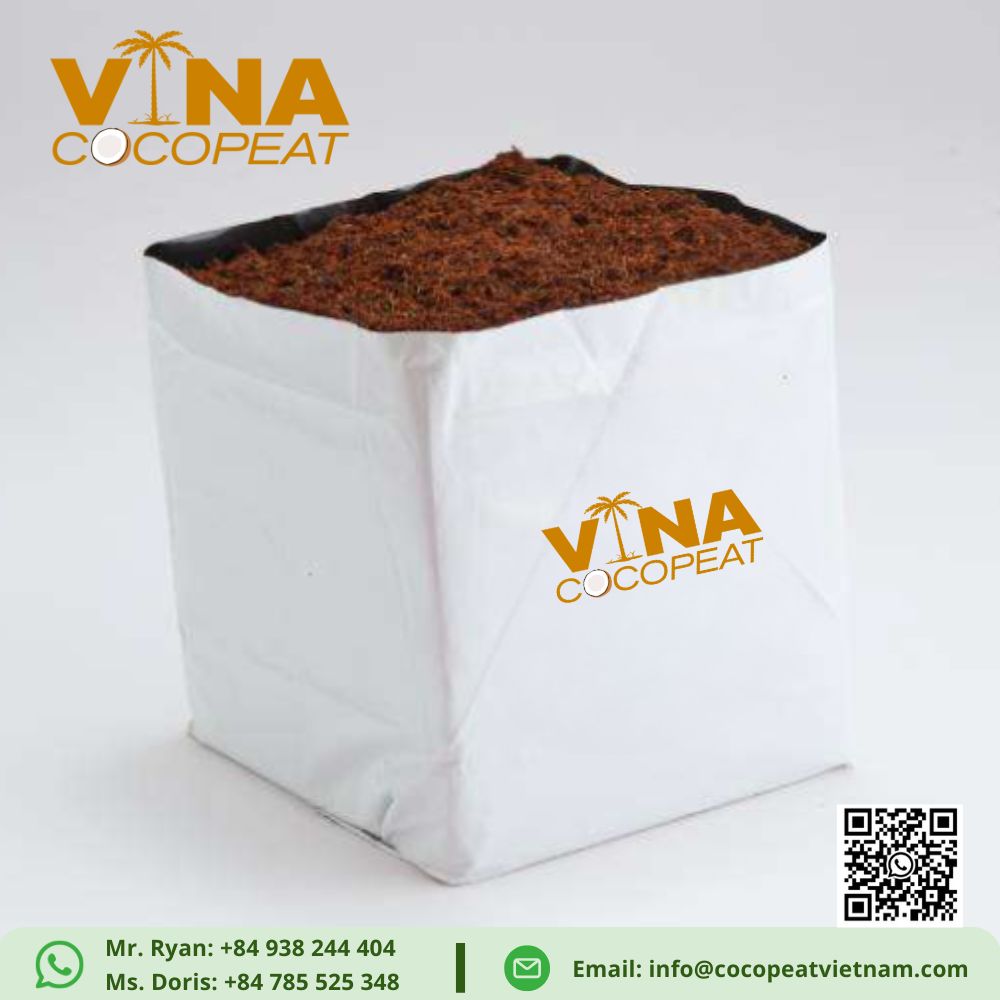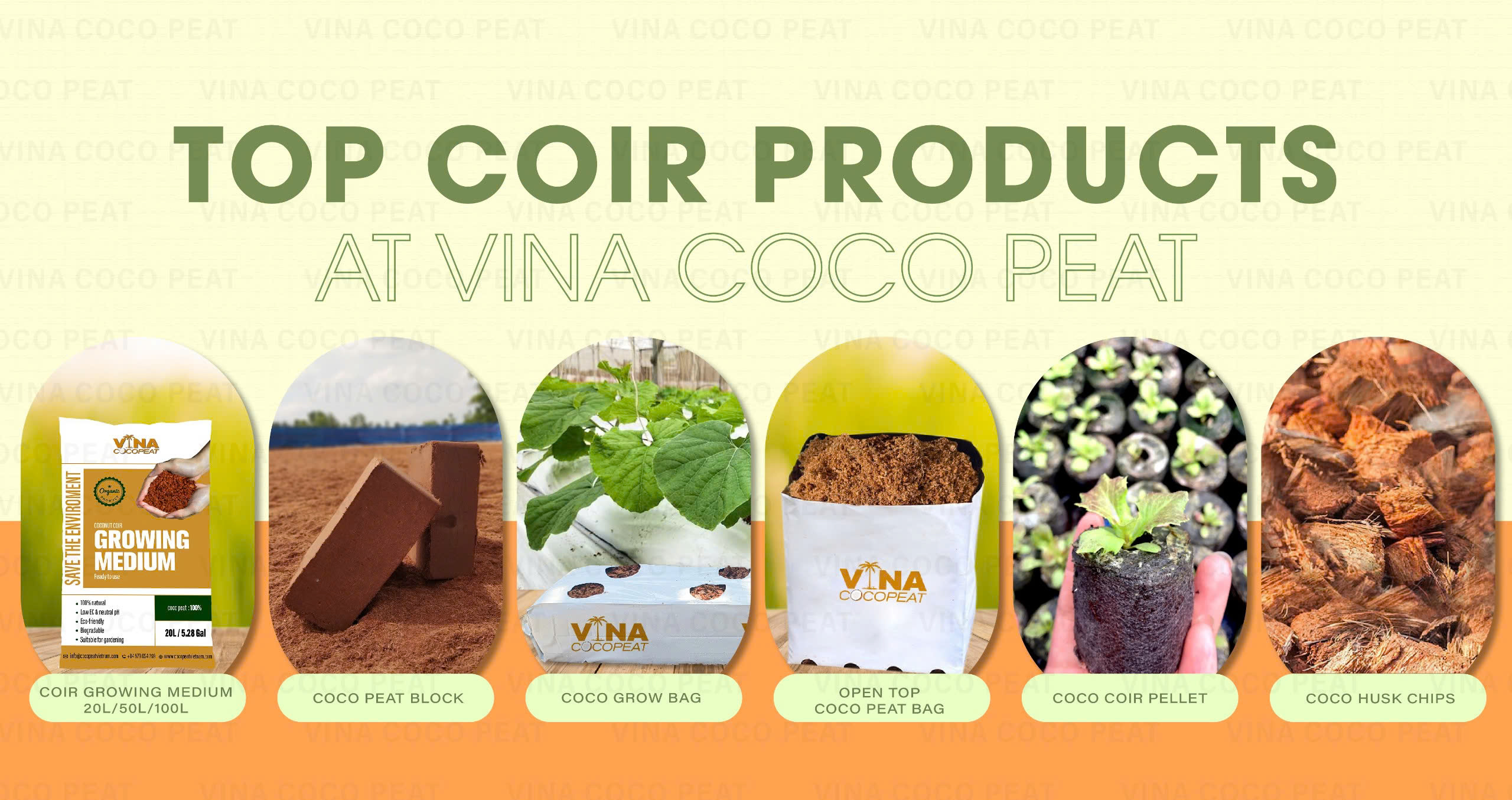Blueberry farming has grown in popularity in the past couple of decades thanks to the yummy flavor and several health advantages connected with these small, nutrient-dense berries. Growers are progressively using creative strategies to improve blueberry farming, one of which is the usage of coco peat open top bags. In this post, we will look at the numerous features of using coco peat open top bags for blueberry growing, including the advantages, strategies, and aspects for a fruitful harvest.
Understanding Coco Peat Open Top Bag
A Coco Peat Open Top Bag is a planting bag packed with coco peat that is intended for convenient usage in agriculture and gardening. These bags often have an open top design, allowing for direct planting of crops such as tomatoes, cucumbers, and peppers, particularly for blueberry growing. Inside is Coco peat, which, sometimes called Coir Pith or Coco Fiber Dust, is a renewable material derived from coconut husks. It is a byproduct of the coconut industry that has shown to be a good substitute for traditional soil in agriculture. Coco peat is valued for its water retention, aeration, and nutrient-holding qualities, making it an excellent substrate for plant development.

Importance of Coco Peat for Blueberry Crops
- Water Retention and Drainage: Coco peat provides excellent water-holding properties, making sure blueberry plants have a steady water supply. Meanwhile, its good drainage properties avoid waterlogging, which is critical for blueberries because they like neutral and well-drained soil.
- pH Balance: Blueberries flourish in neutral environments, with an ideal pH range of 5.5 to 6.8. Coco peat has a slightly neutral pH, making it an ideal medium for blueberry growing without requiring substantial pH modifications.
- Nutrient Holding Capacity: Coco peat functions as a storehouse for critical nutrients, eventually releasing them to blueberry plants over time. This offers a consistent and long-term supply of nutrients, enabling healthy growth and excellent growth of the fruit.
- Environmental Longevity: Using coco peat open-top bags for blueberry cultivation is consistent with sustainable farming methods. The substance is reusable, biodegradable, and frequently obtained as a byproduct of coconut processing, which reduces the negative ecological effects that come from traditional the soil-based cultivation.
- Disease Resistance: Coco peat’s natural antimicrobial capabilities reduce the risk of illnesses spread by soil that might harm blueberry plants. This trait improves the crop’s general health, resulting in increased yields and higher-quality berries.

Selecting the Correct Coco Peat Open Top Bag
The right coco peat open top bags are critical for the development of blueberry cultivation. Take into account the following aspects while selecting bags for your blueberry plants:
- Size and Depth: Blueberry bushes have shallow root systems, so use open top bags with enough depth for root development. A depth of 30-45 cm is normally suggested for blueberries.
- Material Quality: Make certain that the coco peat bags are constructed of materials of superior quality that can handle outside circumstances. UV-resistant bags will last longer and provide safeguards for blueberry plants.
- Breathability: Select open-top bags made of breathable materials to ensure proper root aeration. This is critical for avoiding problems like root rot and ensuring adequate oxygen levels.
Coco Peat Open Top Bag Setting Up
- Fill the Bags: First, take the coco peat open top bags with a coco peat mixture. This blend results in a well-rounded medium with increased aeration.
- Planting Blueberries: Put the blueberry plants in the bags, making sure the root system is completely saturated with the coco peat mixture. Place the plants in the center of the bags, providing plenty of room for growth.
- Watering: Carefully water the blueberry plants afterwards planting to settle the coco peat and start root development. Blueberries demand continually moist soil, therefore regulate the moisture levels to keep the medium from drying out.
- Mulching: Add a layer of organic mulch on top of the coco peat to improve moisture retention, control weeds, and regulate soil temperature. Pine straw and wood chips are excellent options for blueberry growing.

Preservation and services
- Fertilization: While coco peat acts as a nutrient storage tank, it is important to supplement with a balanced fertilizer made specifically for neutral-loving plants. Blueberries benefit from regular feedings throughout the growth season.
- Pruning: Regularly prune to promote airflow and eliminate dead or unhealthy branches. Trimming also helps blueberry bushes maintain their optimal shape.
- Pest and Disease Administration: Maintain a lookout for typical blueberry pests and illnesses, like aphids, mites, and fungal infections. Coco peat’s natural resistance to certain diseases adds an extra layer of protection, but regular monitoring is required.
- Harvesting: Blueberries are normally ready to pick in late spring or early summer. Pick ripe berries gently to avoid hurting the delicate fruit. Harvesting with coco peat bags is easier than with traditional in-ground cropping.
Conclusion

Coco peat open top bags provide a flexible and economical option for blueberry growing, overcoming significant issues with soil-based approaches. Growers may create an ideal habitat for blueberry plants by utilizing coco peat’s water retention, pH balancing, and nutrient-holding qualities, resulting in healthier bushes and an abundant harvest. As the demand for fresh, locally farmed produce keeps on increasing, implementing innovative and eco-friendly technologies such as coco peat bag farming promises to be beneficial for blueberry growers and environmentally conscious farming in general – VINA COCO PEAT is the excellent opt for you-guys.
Feel free to contact with our desicated sales team. We are online 24/7 to server customer.
Ms. Doris: +84 785 525 348 (ZALO, WHATSAPP, WECHAT, LINE)
Mr. Ryan: +84 961 071 137 (ZALO, WHATSAPP, WECHAT)
한국 영업 담당자: +84 969 273 598 (Ms. Lan)
中文: +84 397 317 401 (Ms. Vi)
Email: info@cocopeatvietnam.com – www.cocopeatvietnam.com
